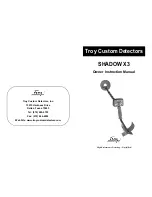
thereby ensured and will continue over the network.
See Figure I-3.
A single open or short on the LON/SLC will not affect
system communication between the field devices and
the gateway. System communication will continue until
the wiring problem can be repaired.
MULTIPLE WIRING FAULTS
In the event of multiple wiring faults on the LON/SLC,
the nodes between the faults will continue to function,
but the faults will prevent them from communicating with
the gateway. See Figure I-4. In this example, nodes 1
to 4 communicate using one gateway port (path A) and
nodes 7 and 8 use the other gateway port (path B).
Nodes 5 and 6 are unable to report to the gateway
because they are isolated by the two wiring faults.
LON/SLC GROUND FAULT DETECTION AND LCU
PROTECTION
The LCU contains an isolation module that checks the
LON/SLC for ground faults. Should a ground fault be
detected, it is indicated by an LED on the isolation
module’s faceplate. The isolation module also ensures
communication with the field devices even if there is a
LON/SLC short circuit directly adjacent to the LCU.
FIELD DEVICES WITHOUT POWER
All Eagle Quantum field devices are designed so that a
“pass-through” circuit is created for the network wiring
on a loss of power to the node. This ensures network
integrity even when a node is down for service or has
been damaged. The Communication Gateway in the
LCU will report powered-down nodes as “not-
communicating.”
IMPORTANT
Since it is impossible to predict where a network
fault might occur or exactly what effect it will have
on actual system operation, it is important to
diagnose and repair any fault as soon as possible
after it is detected to ensure reliable system
operation.
I–4
A1851
NODE 1
NODE 8
NODE 3
NODE 6
NODE 2
NODE 7
NODE 4
NODE 5
LCU
Figure I–2—Normal Communication over the Digital Highway
A1852
LCU
NODE 1
NODE 8
NODE 3
NODE 6
NODE 2
NODE 7
NODE 4
NODE 5
PATH A
PATH B
WIRING FAULT
Figure I–3—Communication with a Single Wiring Fault
on the Network
A1853
LCU
NODE 1
NODE 8
NODE 3
NODE 6
NODE 2
NODE 7
NODE 4
NODE 5
PATH A
PATH B
WIRING FAULTS
Figure I–4—Communication with Multiple Wiring Faults
on the Network







































